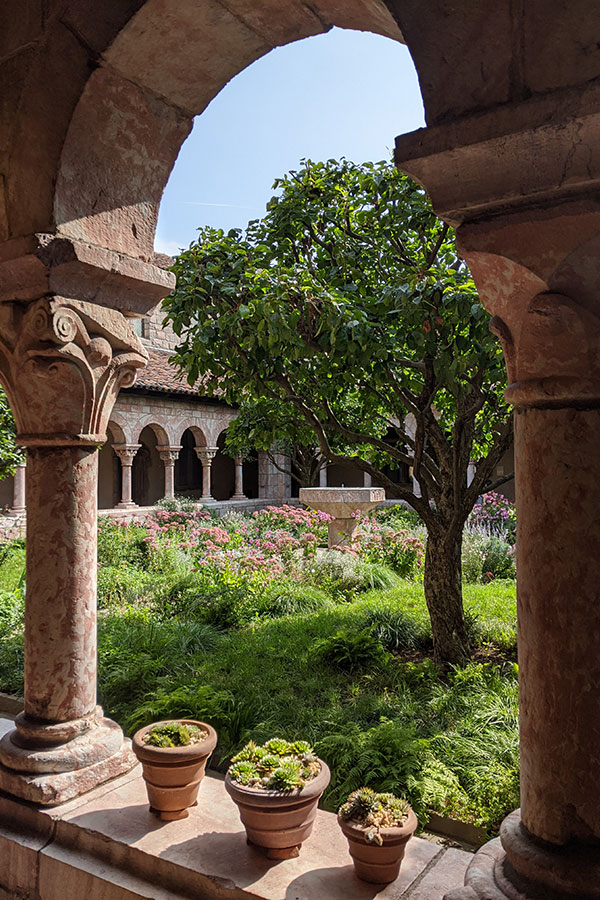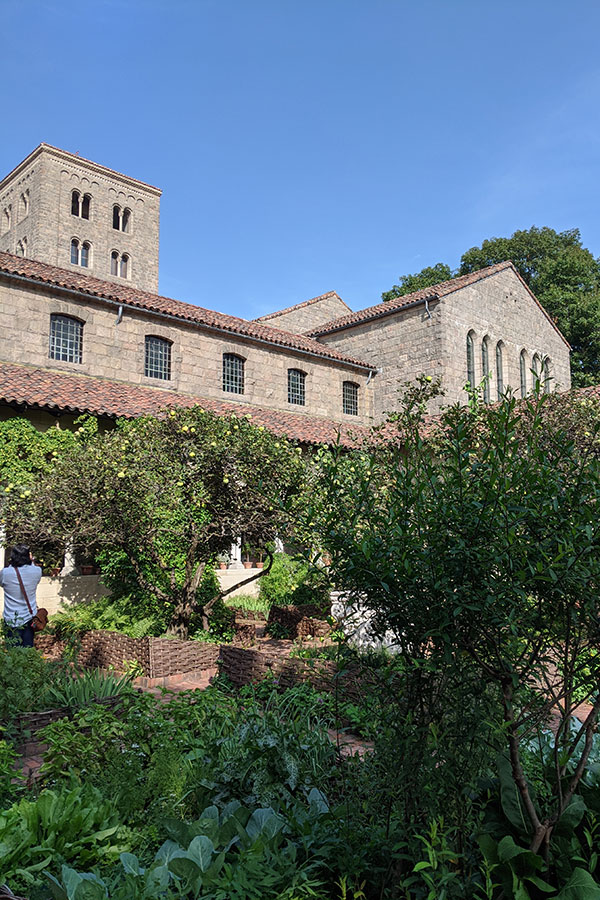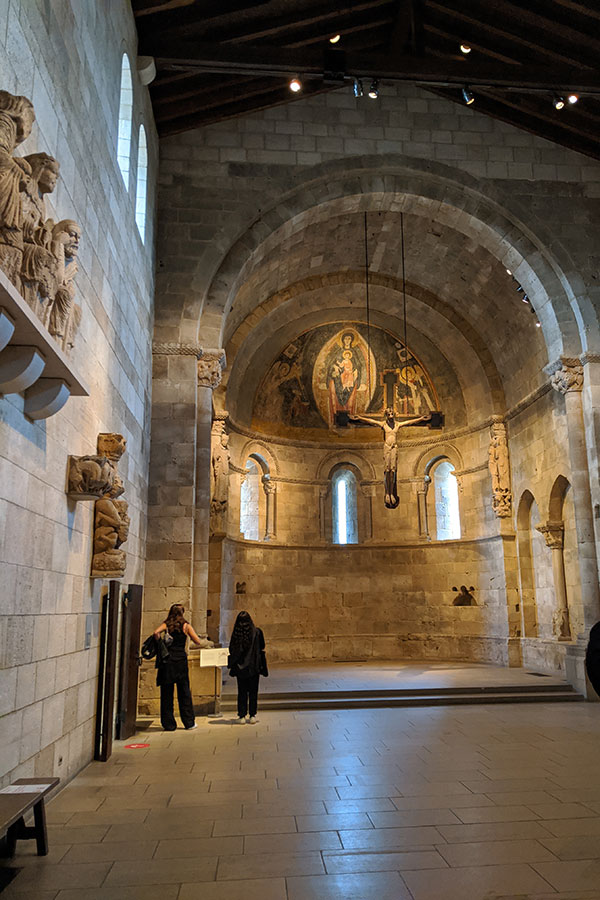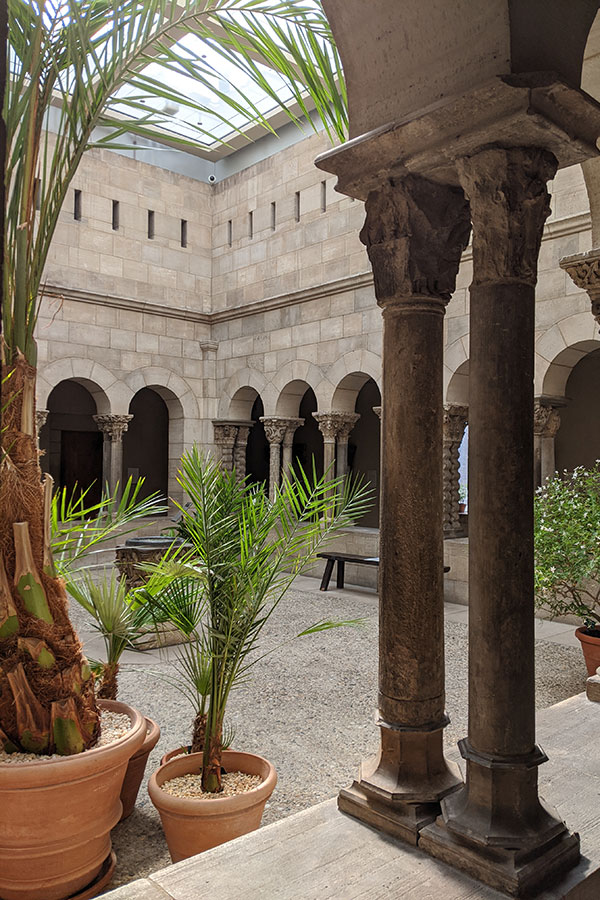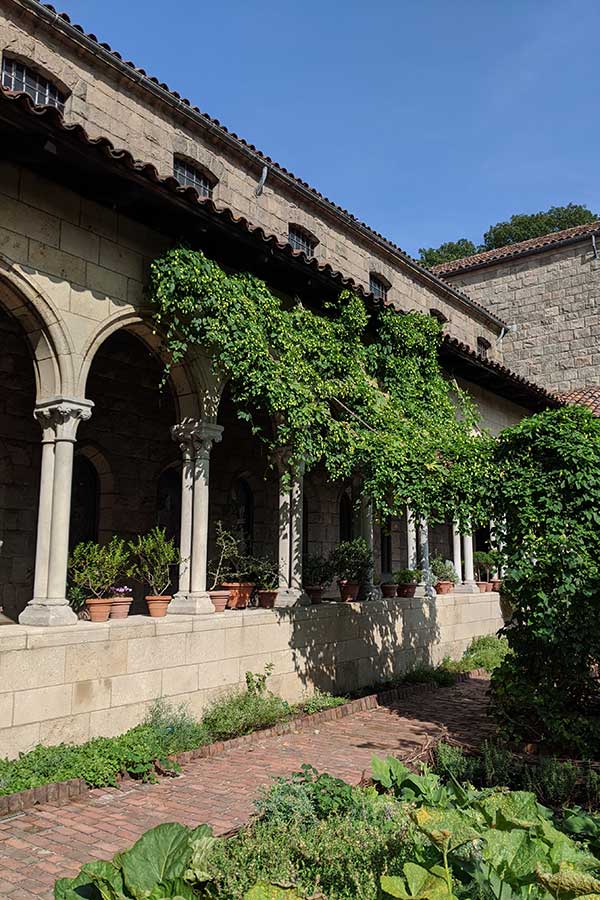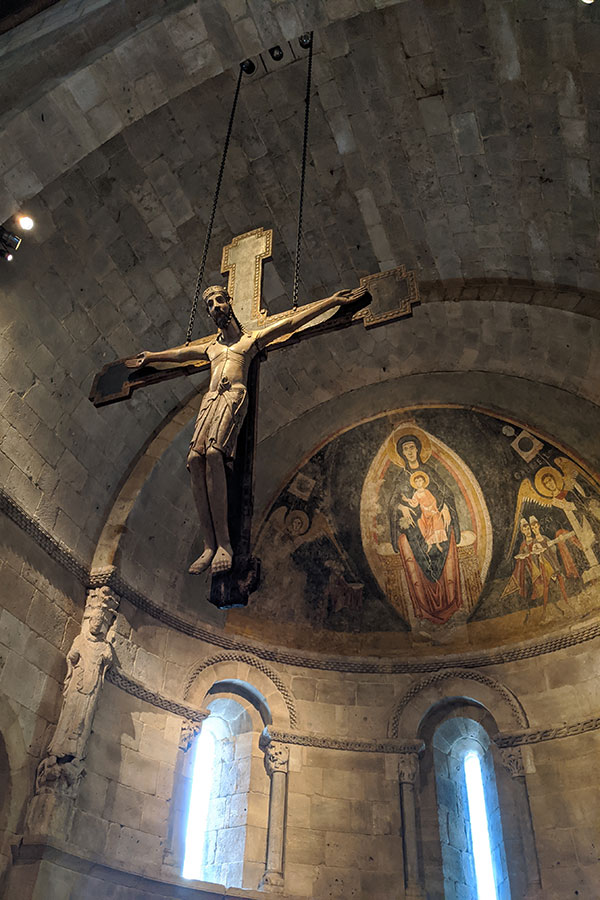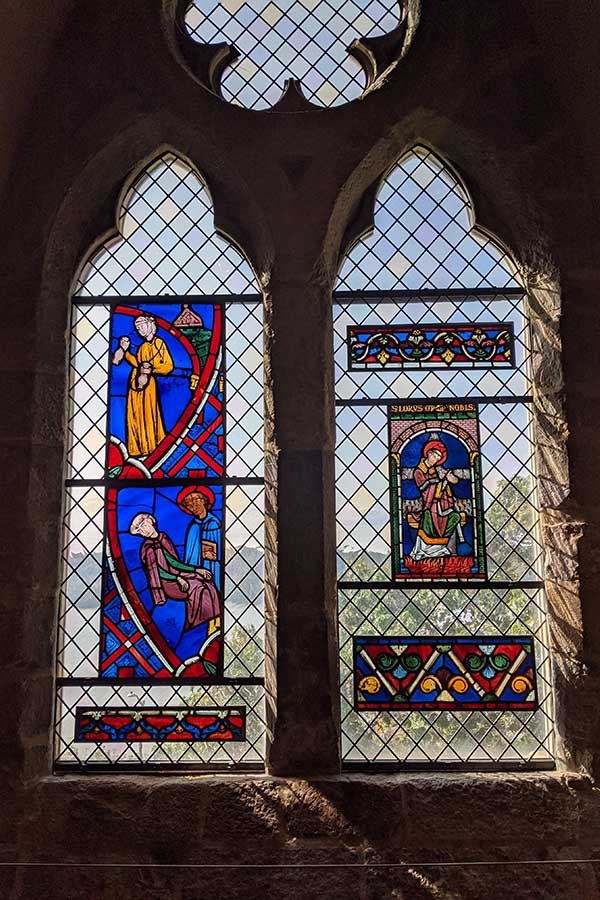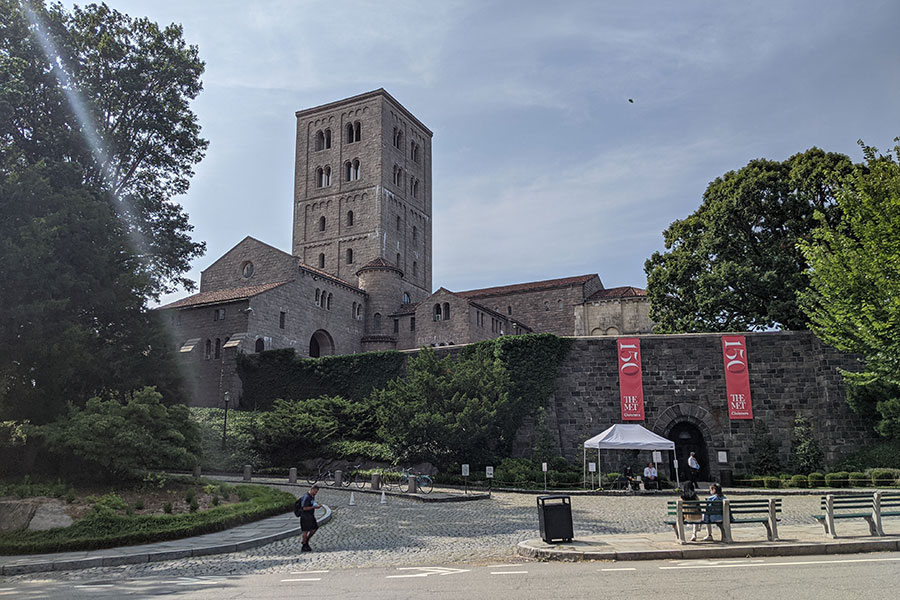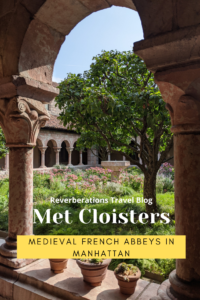Most visitors to New York City will want to explore the world-class museums along the Upper East Side’s Museum Mile or experience the larger than life glitz of Times Square. (And you should!)
But in the northern tip of Manhattan, the Met Cloisters transports visitors away from the busy city. Instead, you find yourself in nearly a half dozen French monasteries that are more than 500 years old. The historical architecture from another era houses religious art, artifacts, furniture, and more. It makes the Met Cloisters an engaging museum to visit as you, quite literally, walk through history.
There is no shortage of attractions and things to do in Manhattan. But this spot in Fort Tryon Park is one of the more unique museums the city has to offer.
A Brief History of the Met Cloisters
So how did all of these historic buildings and items end up in the Big Apple? The New York City Cloisters opened in May 1938 but it didn’t happen overnight.
The museum grew from a seed planted decades earlier by George Grey Barnard. A sculptor and art collector — Barnard’s work can be seen on the exterior of the Pennsylvania State Capitol — he began collecting objects and architecture while living in France. Among his purchases were several buildings from abbeys and churches. With the artifacts, he opened his own gallery in NYC for a time.
Barnard was not the best with money and during a time of financial difficulty in 1925, he sold his collection to John D. Rockefeller, Jr. for less than a million dollars. Talk about a deal. A couple of years later, Rockefeller commissioned the building of a museum that would become the New York Cloisters. And in 1931, he donated the museum to the Metropolitan Museum of Art. To this day, the famous Met of NYC maintains control over this special museum.
While the core of the items on display is from Barnard’s collection, J. P. Morgan and Hungarian-born art collector Joseph Brummer are responsible for additions.
The Cloisters’ Unique Architecture
Rockefeller specifically chose the spot in Fort Tryon Park for its isolation as well as its views.
From its perch in Fort Tryon Park, high above the Hudson River, the Met Cloisters offers stunning views onto neighboring New Jersey. You would be forgiven for thinking the building has been there for hundreds of years as opposed to a more recent addition.
The building itself is a clever and seamless combination of four separate cloisters: Saint-Michel-de-Cuxa, Saint-Guilhem-le-Désert, Abbaye de Bonnefont, and Trie-sur-Baïse. All of the buildings originated in France and the ages range from the early 9th century to the 18th century.
Additionally, there are several churches and chapels that have been integrated into the museum as “gallery” space.
Gardens Overlooking the Hudson River
Part of what makes these New York cloisters intriguing is how much it has to offer its visitors. If religious artifacts and art don’t interest you, perhaps the gardens will. The four courtyards of the cloisters are either fully outdoors or feel as though you’re outdoors with glass ceilings. Each garden has its own distinctly unique feeling. The live plants that decorate each area are largely responsible for that emotional response you feel.
Perhaps my favorite of the cloisters is the Bonnefont Cloister. Nearly the entire area is full of plants authentic to a medieval European garden. Hops are trellised up to an overhanging roof while medicinal (and poisonous!) plants grow below, reaching out for the sun overlooking the river. The raised bed garden is impressive and feels less like a curated museum and more like a beautiful greenhouse. During my visit in late summer, bees and butterflies flew happily around. Humans aren’t the only ones who appreciate these New York cloisters!
The Cloisters’ Stunning Collection
One aspect of the New York Met Cloisters is certainly the authentic chapels and buildings that have been pieced together. The other aspect is the remarkable collection of art and artifacts. These range from handmade glassware and utensils to hand-lettered books as well as carefully carved stone tombs and stunning golden treasures.
There are pocket-sized wooden balls housing religious scenes that are so minute and impossibly detailed that’s they’re still impressive today. Elsewhere, large tapestries hang over the otherwise cold stone walls, covering huge areas while depicting memorable scenes. Perhaps the most famous one in the collection is the “Hunt of the Unicorn” series. It’s a group of tapestries from the late 15th or early 16th century.
Some you get to experience in a somewhat realistic setting. For example, altarpieces set in chapels beside detailed crucifixes. Other items, however, are displayed in a more traditional museum style. Many of the Schatzkammer items, or treasures generally owned by royalty, are displayed together in a room where they’re protected by the safety of glass.
Fort Tryon Park
I’d be remiss if I didn’t mention the lush and decidedly not urban setting for the time-traveling museum. Fort Tryon Park is more than just the home of the museum. It’s a fantastic park that is worth exploring, especially if you’re already in the neighborhood.
During the American Revolution, there was a battle fought on the site. Spoiler alert: the British won that fight, the Battle of Fort Washington. With the win, the British renamed the outpost after the British Governor of the Province of New York, Sir William Tryon. Prior to that, the area was inhabited by Native Americans, specifically a Lenape tribe. And they left their mark. Archaeologists studying the area have found artifacts for decades.
Now fast forward nearly two hundred years. That’s when Rockefeller started acquiring land in the area and the park’s founding started to come together.
Part of what makes Fort Tryon Park so spectacular is the way it meanders. Built into the cliffs overlooking the Hudson River, walking paths wind around and staircases lead up and down the wooded terraces. There are plenty of picnic and recreation areas, too, if you’re looking for a spot to unwind.
Whether you’re looking for a way to escape the hustle and bustle of the city or an alternative to Central Park, Fort Tryon Park has a lot to offer.
Tips for Visiting this New York City Museum
Because the Met Cloisters is part of the Met, there are some money-saving deals that you can find. For example, you can get a 2-for-1 ticket for both museums. If you’re planning to do sightseeing all over the city, consider the NYC Explorer Pass.
The Met Cloisters is fairly easy to get to considering it is in New York City. As it is near the George Washington Bridge, visitors from out of state who want to drive can easily access it via the New Jersey Turnpike and I-95. Fort Tryon Park has quite a bit of free parking throughout the park that visitors arriving by car can use.
There are also plenty of options if you’re looking to use public transit. The closest subway stop is the 181st Street Station on the A train. From there, take the M4 bus to the Margaret Corbin Dr/Cloisters stop. You’ll find yourself right in front of the museum. Currently, the Cloisters New York is the final stop on the bus route.
Save this post for later on Pinterest!
All photos, as well as all opinions, are my own. This post contains affiliate links.
